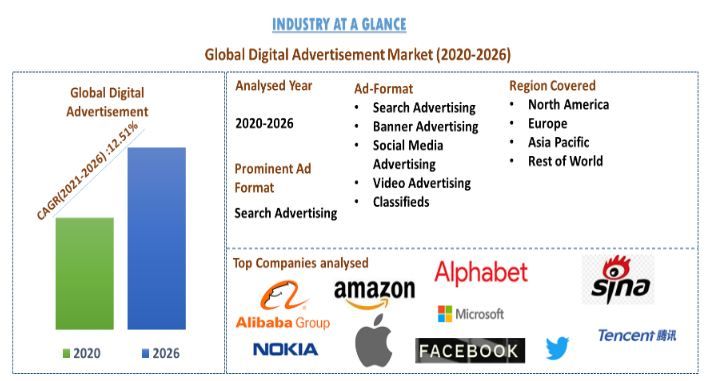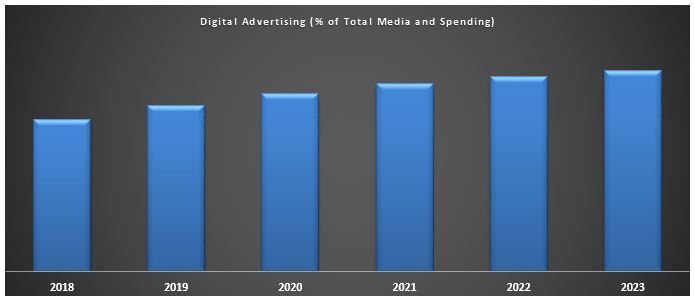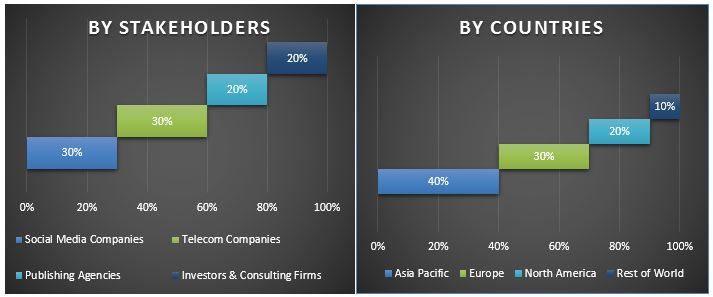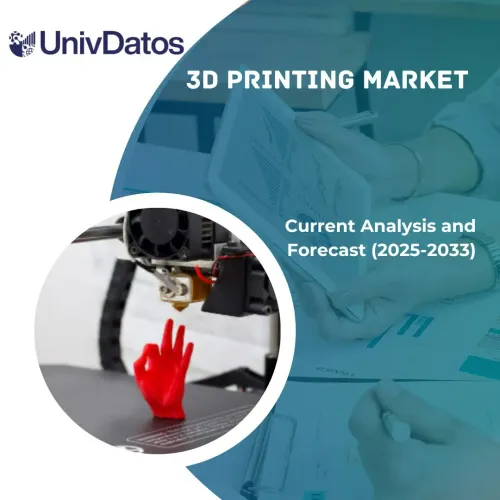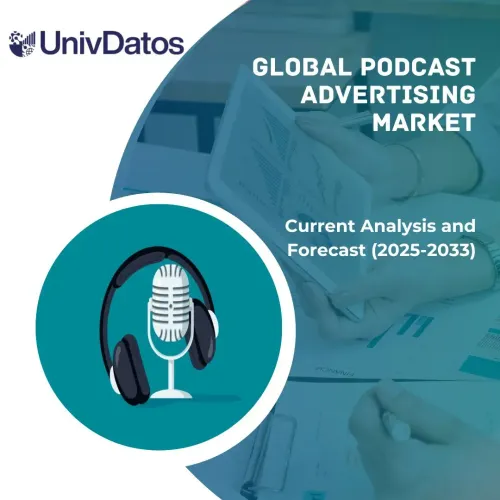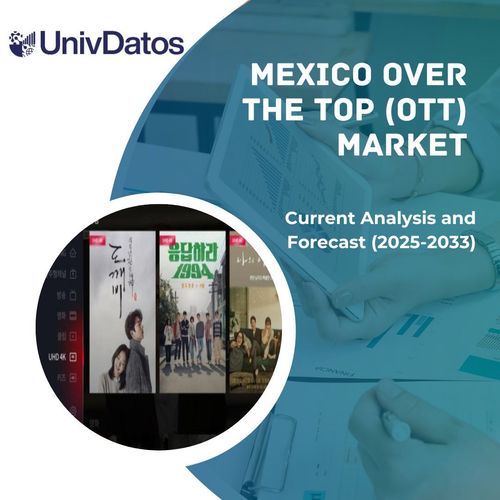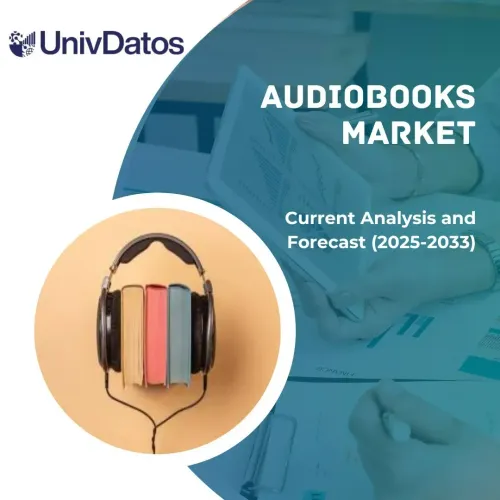디지털 광고 시장: 현재 분석 및 전망 (2020-2026)
플랫폼(데스크톱, 모바일) 강조; 프로그래밍 유형(프로그래밍 방식, 비프로그래밍 방식); 광고 형식별(검색 광고, 배너 광고, 소셜 미디어 광고, 비디오 광고, 분류 광고); 산업(소매, 자동차, 금융 서비스, 통신, CPG 산업, 관광 및 여행, 기타 산업) 및 지역 및 국가
디지털 광고는 전 세계적으로 가장 빠르게 성장하는 전자 상거래 솔루션 중 하나가 되었습니다. 스마트폰 보급률 증가, 소셜 미디어의 영향력 확대, 인공 지능 및 로봇 공학의 급증하는 범위는 새로운 시대에 이러한 마케팅 수요를 상당히 촉진했습니다. 디지털 마케팅은 주로 디지털 기술(주로 인터넷)을 사용하여 제품 또는 서비스를 마케팅하는 포괄적인 용어이며, 여기에는 휴대폰, 디스플레이 광고 및 기타 디지털 매체가 포함될 수 있습니다. 디지털 마케팅 산업은 마케터가 올바른 대상을 타겟팅하고 마케팅되는 제품 또는 서비스에 관심을 갖도록 돕는 다양한 디지털 마케팅 채널을 도입했습니다. 디지털 마케팅은 브랜드가 강력한 온라인 존재감을 구축해야 할 필요성을 야기했습니다. 인터넷은 거의 즉각적인 피드백과 데이터 수집을 가능하게 하므로 오늘날의 디지털 마케터는 이메일 마케팅, 검색 엔진 마케팅, 제휴 마케팅, 인플루언서 마케팅, 소셜 미디어 마케팅, PPC 및 온라인 광고에 이르는 다양한 플랫폼을 채택하여 온라인 마케팅 노력을 최적화하고 개선하는 데 끊임없이 집중합니다.
비용 효율성, 더 나은 노출, 시간 효율성, 소셜 통화 및 브랜드 구축은 디지털 마케팅이 제공하는 주요 이점 중 일부입니다. 그러나 코로나바이러스 팬데믹으로 인해 심각한 경기 침체가 발생하면서 디지털 광고 수요에도 영향을 미쳤습니다. 예를 들어, 중국의 검색 광고 지출은 2020년 상반기에 7.0%에서 12.4% 감소했습니다. 팬데믹은 다양한 비즈니스 영역에 영향을 미쳤습니다. 필수품 관련 사업을 제외한 대부분의 사업이 중단되고 기업들도 비용을 절감하고 있는 것으로 나타났습니다. 바이러스로 인해 대부분의 예정된 디지털 마케팅 계획이 중단되거나 속도가 느려졌습니다. 디지털 마케팅에서 그 영향이 느껴집니다. 예를 들어, 기업의 90%가 마케팅 예산을 검토하고 있습니다. 이메일 열람률은 증가하고 웹사이트 방문자 수는 감소하고 있습니다. 소매 판매 또한 COVID 이후 시대에 감소할 것으로 예상되어 판매자는 줄어든 시장 점유율을 위해 싸워야 합니다. 이러한 사실에도 불구하고 디지털 마케팅은 여전히 강세를 보이고 있습니다. 3월 25일부터 4월 6일 사이에 200만 개 이상의 코로나바이러스 관련 페이지가 생성되었고 매일 10만 개의 페이지가 추가되는 것으로 나타났습니다. 유명 브랜드는 또한 위생 습관을 강조하여 광고에서 사회적 거리 두기를 장려하고 있습니다.
팬데믹은 다양한 비즈니스 영역에 영향을 미쳤습니다. 필수품 관련 사업을 제외한 대부분의 사업이 중단되고 기업들도 비용을 절감하고 있는 것으로 나타났습니다. 바이러스로 인해 대부분의 예정된 디지털 마케팅 계획이 중단되거나 속도가 느려졌습니다. 디지털 마케팅에서 그 영향이 느껴집니다. 예를 들어, 기업의 90%가 마케팅 예산을 검토하고 있습니다. 이메일 열람률은 증가하고 웹사이트 방문자 수는 감소하고 있습니다. 소매 판매 또한 COVID 이후 시대에 감소할 것으로 예상되어 판매자는 줄어든 시장 점유율을 위해 싸워야 합니다. 이러한 사실에도 불구하고 디지털 마케팅은 여전히 강세를 보이고 있습니다. 3월 25일부터 4월 6일 사이에 200만 개 이상의 코로나바이러스 관련 페이지가 생성되었고 매일 10만 개의 페이지가 추가되는 것으로 나타났습니다. 유명 브랜드는 또한 위생 습관을 강조하여 광고에서 사회적 거리 두기를 장려하고 있습니다.
전 세계 디지털 광고 지출, 2018-2023년
보고서에 제시된 인사이트
"광고 형식 중에서 검색 광고가 글로벌 디지털 광고 시장을 지배할 것으로 예상됩니다"
광고 형식을 기준으로 디지털 광고 시장은 검색 광고, 배너 광고, 소셜 미디어 광고, 미디어 광고, 비디오 광고 및 분류 광고로 분류됩니다. 사용 편의성으로 인해 적절한 대상에게 도달하는 저예산 방식이 디지털 광고의 검색 광고 형식에 대한 선호도를 높인 것으로 나타났습니다. 2020년에는 42.8%의 시장 점유율을 차지했습니다.
"프로그래밍 유형 중에서 프로그래매틱 광고가 디지털 광고의 주요 유형을 구성합니다."
프로그래밍 유형을 기준으로 디지털 광고 시장은 프로그래매틱 유형과 비프로그래매틱 유형으로 나뉩니다. 프로그래매틱 광고는 더 큰 투명성, 광고 사기를 효과적으로 처리하는 능력 및 향상된 타겟팅 기능으로 인해 최대 점유율을 차지하는 것으로 나타났습니다. 시장은 2026년까지 5,028억 달러에 이를 것으로 예상됩니다.
"플랫폼 중에서 모바일이 분석 기간 동안 디지털 광고 시장에서 최대 점유율을 차지할 것으로 예상됩니다."
플랫폼을 기준으로 시장은 데스크톱 및 모바일 애플리케이션으로 분류됩니다. 2020년 모바일 광고 시장은 1,830억 달러로 평가되었습니다. 스마트폰 보급률 증가, 다양한 사용자 친화적인 온라인 쇼핑 앱 출시, 인터넷 범위 확대로 인해 해당 기간 동안 휴대폰 점유율이 증가했습니다.
"산업 분야 중에서 소매 부문이 예측 기간 동안 디지털 광고 시장에서 최대 점유율을 차지할 것으로 예상됩니다."
산업 분야를 기준으로 시장은 소매, 자동차, 금융 서비스, 통신, 소비재, 여행 및 기타로 분류됩니다. 소매 부문에서 디지털 마케팅에 채택한 옴니채널 접근 방식은 고객 여정을 매핑하고 모든 전환에서 불일치를 초래하며 고객 서비스 챗봇의 광범위한 응용 프로그램이 소매업체에서 채택됨에 따라 해당 부문이 두각을 나타내게 되었습니다.
"국가 중에서 미국이 디지털 광고에서 최대 점유율을 차지합니다."
디지털 광고 수요 추세를 더 잘 이해하기 위해 북미, 유럽, 아시아 태평양 및 기타 세계 주요 지역에 대한 자세한 분석이 수행되었습니다. 북미는 2019년 디지털 광고 시장에서 최대 점유율을 차지했습니다. 미국은 모바일 인터넷 광고의 상당한 성장으로 인해 디지털 광고가 급증하여 지난 10년 동안 역학 관계가 크게 변화했고, 2018년에는 디지털 광고 지출이 1,000억 달러를 초과하면서 해당 시장에서 지역 성과를 촉진했습니다.
상위 10개 경쟁 업체
시장에서 활동하는 주요 업체로는 Alibaba, Amazon, Facebook Inc, Alphabet, Microsoft Corporation, Sina, Nokia Corporation, Tencent, Twitter 및 Apple Inc가 있습니다.
이 보고서를 구매해야 하는 이유:
- 이 연구에는 디지털 광고 추세에 대한 현재 및 수요 예측이 포함되어 있습니다.
- 이 보고서는 전체 산업 성과에 대한 빠른 검토를 한눈에 제공합니다.
- 이 보고서는 주요 비즈니스 재무, 제품 포트폴리오, 확장 전략 및 최근 개발에 대한 주요 초점을 포함하여 주요 산업 동료에 대한 심층 분석을 다룹니다.
- 산업에서 널리 퍼져있는 동인, 제약, 주요 추세 및 기회에 대한 자세한 조사
- 이 연구는 손 소독제 수요와 그 격차를 제한하는 데 있어 이해 관계자의 접근 방식을 포괄적으로 다룹니다.
- 디지털 광고 추세에 대한 심층적인 지역 수준 분석
맞춤 설정 옵션:
글로벌 디지털 광고 마케팅 시장은 요구 사항에 따라 추가로 맞춤 설정할 수 있습니다. 이 외에도 UMI는 귀하가 귀하의 비즈니스 요구 사항을 가지고 있을 수 있음을 이해하므로 귀하의 요구 사항에 완벽하게 맞는 보고서를 얻기 위해 언제든지 저희에게 연락하십시오.
목차
디지털 광고의 가용성 및 수요를 생성하고 분석하기 위해 수행된 세 가지 주요 단계에서 전 세계 디지털 광고에 대한 과거 가용성 분석, 현재 추정 및 미래 수요 예측이 수행되었습니다. 과거 수치를 수집하고 현재 수요를 추정하기 위해 광범위한 2차 조사가 수행되었습니다. 둘째, 이러한 통찰력을 검증하기 위해 수많은 조사 결과와 가정을 고려했습니다. 또한 미디어& 엔터테인먼트 부문의 가치 사슬 전반에 걸쳐 업계 전문가와 함께 광범위한 1차 인터뷰도 실시했습니다. 1차 인터뷰를 통해 수치를 가정하고 검증한 후, 우리는 디지털 광고의 전체 수요 규모를 예측하기 위해 상향식 접근 방식을 사용했습니다. 자세한 방법론은 아래에 설명되어 있습니다.
과거 시장 규모 분석
1단계: 2차 출처에 대한 심층 연구:
정부 성명, 보도 자료, 저널, 뉴스 및 기사, 정부 간행물, 경쟁업체 간행물, 연구 조사, 타사 데이터베이스 및 기타 신뢰할 수 있는 간행물과 같은 다양한 출처를 통해 주요 지역에서 디지털 광고의 가용성을 확보하기 위해 자세한 2차 연구가 수행되었습니다. 경제 데이터 수집을 위해 Trading Economics, Trade Map, World Bank, IMF 및 FAO와 같은 출처가 사용되었습니다.
2단계: 국가 세분화:
국가 세분화는 특정 국가의 디지털 광고 범위 침투율과 인터넷 연결성을 기준으로 수행되었습니다. 또한 정보를 얻은 후 연결성 침투, 스마트폰 보급 및 인공 지능 범위에 대한 정보를 수집하기 위해 자세한 2차 분석을 수행했습니다.
3단계: 요인 분석:
소비자 구매 결정에 대한 디지털 광고의 영향에 대한 정보를 얻은 후, 해당 지역에서 디지털 광고의 현재 범위를 추정하기 위해 자세한 요인 분석을 수행했습니다. 또한 소셜 미디어의 영향력 증가, 인공 지능에 대한 수요 증가, 스마트폰 보급률 급증, 가처분 소득 증가, 전 세계 소비자의 인식 수준 증가와 같은 종속 변수와 독립 변수를 사용하여 요인 분석을 수행했습니다. 최고의 파트너십, 합병 및 인수, 사업 확장, 제품 출시를 고려하고 전 세계 미디어 및 엔터테인먼트 산업의 스타트업 목록을 분석하여 수요 및 공급 측면 시나리오에 대한 철저한 분석이 수행되었습니다.
현재 시장 규모 추정 및 예측
현재 수요 규모 조정: 위의 단계에서 얻은 실행 가능한 통찰력을 바탕으로 우리는 전 세계 주요 지역에서 디지털 광고의 보급률, 디지털 광고 시장의 주요 업체 및 이러한 업체의 시장 점유율을 파악했습니다. 필요한 모든 비율 점유율 분할은 위에서 언급한 2차 접근 방식을 사용하여 결정되었으며 1차 인터뷰를 통해 확인되었습니다.
추정 및 예측: 수요 추정 및 예측을 위해 동인 및 추세, 제약 및 이해 관계자에게 제공되는 기회를 포함한 다양한 요인에 가중치가 할당되었습니다. 이러한 요인을 분석한 후 관련 예측 기술, 즉 상향식 접근 방식을 적용하여 전 세계 디지털 광고에 대한 2026년경의 수요 추정 예측에 도달했습니다. 시장 규모를 추정하기 위해 채택된 연구 방법론은 다음과 같습니다.
- 디지털 광고의 현재 및 수요 예측 분석
- 다양한 중개인의 존재와 관련된 가치 사슬 분석
- 빠르게 성장하는 시장에서 생존하기 위해 시장 참여자가 채택한 디지털 광고 시장의 경쟁 환경과 성장 전략을 정의하고 분석합니다.
시장 규모 및 점유율 유효성 검사
1차 연구: 주요 국가의 최고 경영진(CXO/VP, 영업 책임자, 마케팅 책임자, 운영 책임자 및 국가 책임자, 국가 책임자 등)을 포함한 핵심 오피니언 리더(KOL)와 심층 인터뷰를 진행했습니다. 그런 다음 1차 연구 결과를 요약하고 통계 분석을 수행하여 명시된 가설을 입증했습니다. 1차 연구의 입력은 2차 결과와 통합되어 정보를 실행 가능한 통찰력으로 전환했습니다.
다양한 국가의 주요 참가자 분할
시장 엔지니어링
전반적인 수요 추정을 완료하고 연구된 각 국가에 대한 정확한 통계 수치를 도출하기 위해 데이터 삼각 측량 기술이 사용되었습니다.
디지털 광고 수요 시장 조사의 주요 목표
현재 및 미래의 디지털 광고 수요 추세가 연구에서 정확히 지적되었습니다. 투자자는 연구에서 수행된 정성적 및 정량적 분석에서 투자에 대한 재량의 기반이 되는 전략적 통찰력을 얻을 수 있습니다. 현재 및 미래의 수요 추세는 국가 수준에서 시장의 전반적인 매력도를 결정하여 산업 참가자가 미개척 시장을 활용하여 선점자 이점을 누릴 수 있는 플랫폼을 제공했습니다. 연구의 다른 정량적 목표는 다음과 같습니다.
- 디지털 광고 트렌드의 현재 및 수요 예측 분석
- 산업에 대한 고객 및 경쟁업체의 행동 분석과 함께 다양한 중개인의 존재와 관련된 가치 사슬 분석
- 보고서에서 연구된 주요 국가에는 북미, 유럽, 아시아 태평양 및 기타 국가가 포함됩니다.
- 디지털 광고 시장의 경쟁 환경과 빠르게 성장하는 시장에서 생존하기 위해 시장 참여자가 채택한 성장 전략을 정의하고 분석합니다.
- 디지털 광고 보급에 대한 심층적인 국가별 분석
관련 보고서
이 상품을 구매한 고객님들도 함께 구매하신 상품

